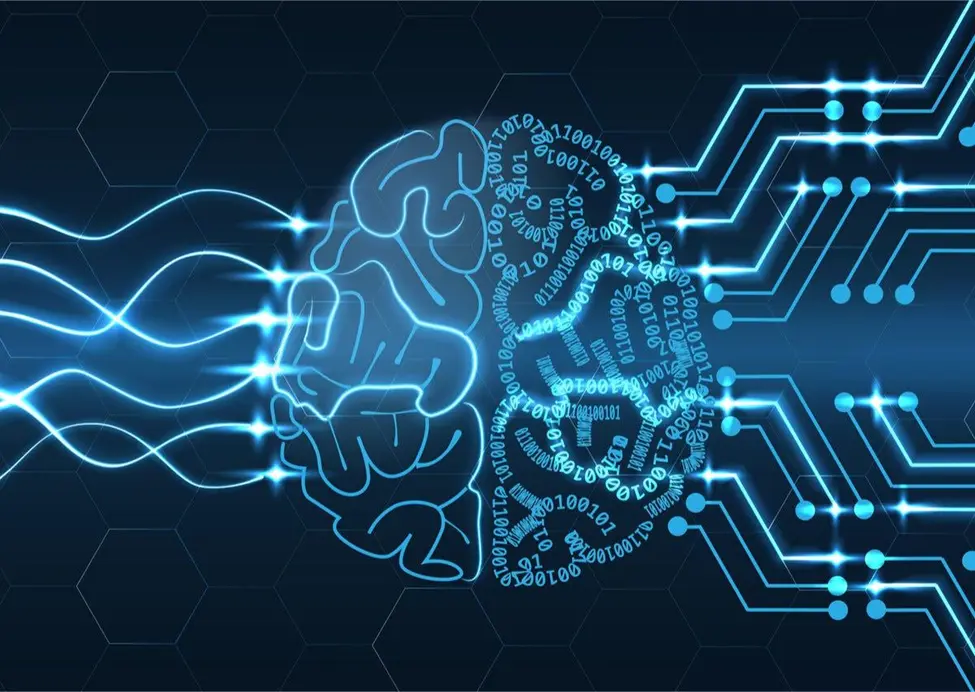
Kubernetes is becoming increasingly popular for delivering and managing workloads in machine learning and data analytics. Recent studies have shown that 96% of respondents use Kubernetes in production, making it the most popular container orchestration platform. As reported by 491 IT professionals across sectors in a 2017 Portworx poll, nearly half (43%) of respondents admitted using Kubernetes, 32% calling it their principal orchestration tool.
This piece will go into Kubernetes’s strengths and how they can be applied to data science and machine learning projects. We will discuss its fundamental principles and building blocks to help you successfully install and manage machine learning workloads on Kubernetes.
Moreover, this blog will give essential insights and practical direction on making the most of this powerful platform, whether you’re just starting with Kubernetes or trying to enhance your machine learning and data science operations. Let’s get in and learn all there is to know about using Kubernetes with your machine learning and data science projects.
What are Machine Learning and Data Science Workloads?


Machine learning and data science workloads are a subset of the broader category of computational tasks, including examining data to draw conclusions and make decisions. Large datasets are the norm for these tasks, and various methods and algorithms are utilized to glean insights from the data.
Machine learning tasks rely on statistical and mathematical models to evaluate data and create predictions or classifications. Methods like decision trees, neural networks, and regression analysis can be used. Predictions and categories are made using models trained on an extensive dataset. This procedure can be fully or partially supervised depending on the data and the desired outcomes.
Statistical and computational approaches are applied in data science tasks to get insights and information. Methods such as statistical analysis, machine learning, and data visualization can all play a role here. Data scientists seek to enhance fields like business, healthcare, and the social sciences by mining large amounts of information for patterns that can be utilized later to make more educated decisions.
Since both machine learning and data science entail processing and analyzing enormous volumes of data, they are both resource-intensive.
What is Kubernetes?
Kubernetes is an open-source container orchestration technology that streamlines deploying, scaling, and managing containerized software. Google created it, and today the Cloud Native Computing Foundation is responsible for its upkeep. (CNCF).
Kubernetes offers a declarative API for expressing intended application states and a group of controllers that watch the system and ensure the actual state corresponds to the planned state.
Pods are the minor deployable components in Kubernetes, and their notion is central to the system’s design. The term “pod” refers to a collection of two or more containers with a standard storage volume and network namespace.
Automatic load balancing, self-healing, and rolling upgrades are just a few of the valuable tools for managing pods available in Kubernetes. (Learn How To Run Applications on Top Of Kubernetes)
Using Kubernetes for Machine Learning and Data Science Workloads


Machine learning and data science workloads generally use a lot of storage space and CPU time. Kubernetes can aid with workload management by offering a flexible and scalable container-operational environment. Best practices for deploying Kubernetes for machine learning and data science workloads are detailed below.
Use GPUs for Acceleration
GPU acceleration is helpful for many data science and machine learning jobs. Graphics processing units (GPUs) are high-speed at matrix operations since they are massively parallel processors.
Kubernetes’s device plugin system makes it possible to employ graphics processing units. Kubernetes can now allocate containers to nodes with available GPUs with the help of these plugins.
Use Distributed Computing Frameworks
Kubernetes can handle the administration of these frameworks by deploying a group of worker nodes, each of which runs its instance of the framework. The distributed infrastructure Kubernetes uses to coordinate the execution of a task across a cluster may then schedule containers to run on these nodes. Kubernetes also helps you expand or contract your sets as needed.
Use Persistent Volumes for Data Storage
Containers must be able to store and retrieve massive volumes of data to support machine learning and data science workloads. Persistent quantities, which are volumes of storage that outlive a pod, are supported by Kubernetes.
Data for machine learning models may be stored on persistent volumes, and distributed computing frameworks can use them as a shared file system.
Dynamic volume provisioning is another feature made possible by Kubernetes, and it allows storage volumes to be dynamically produced and associated with pods at the time they are needed.
Use Custom Resource Definitions
The Kubernetes API may be expanded to include domain-specific ideas using the system’s built-in method for building new resources. Provide a declarative API for maintaining custom resources, such as those used to specify machine learning models or data science workflows.
Kubernetes also includes a collection of controllers that may be used to monitor your resources and ensure they’re in sync with your expectations.
Use Helm for Package Management
Helm is a Kubernetes package manager that makes distributing, deploying, and managing apps in the Kubernetes ecosystem easier. You may use Helm to manage, deploy and upgrade your Kubernetes resources across numerous settings and specify their requirements and configuration. Helm also allows users to produce visualizations that may be reused to further aid in deploying complex machine learning and data science workloads.
Use Kubernetes Operators
Kubernetes Operators provide a mechanism for packaging, deploying, and managing advanced applications. Operators are domain-specific controllers that provide the functionality to the Kubernetes API.
The use of operators can give a greater degree of abstraction for controlling machine learning models and data science operations. Kubernetes has a collection of libraries for constructing Operators, which may be used to streamline the creation of complex programs.
Put Istio to Work for Traffic Control
With Istio, traffic between services in a Kubernetes cluster can be controlled and managed. Istio’s traffic routing, load balancing, and service discovery capabilities may be utilized to control the data streams generated by machine learning and data science projects.
Troubleshooting and diagnostics are facilitated by Istio’s support for distributed tracing and monitoring.
Key Benefits of using Kubernetes for Machine Learning and Data Science Workloads


Below are some key benefits of using Kubernetes for Machine Learning and Data Science Workloads
- Scalability: Kubernetes offers a scalable infrastructure for operating containers, which may be scaled up or down depending on the application’s requirements.
- Flexibility: You can employ various tools and frameworks for machine learning and data science thanks to Kubernetes’s versatile platform for deploying and managing containers, which it provides.
- Resource Management: The sophisticated resource management capabilities offered by Kubernetes, such as auto-scaling, are designed to assist in making the most efficient use of available computing resources.
- Adopting Graphics Processing Units: Kubernetes offers support for GPUs in the form of device plugins, which help speed up the processing of workloads associated with machine learning and data science.
- Dispersed Processing: Kubernetes is a tool that may be used to manage distributed computing frameworks like Apache Spark and TensorFlow. This tool simplifies scaling up and down depending on the application’s requirements.
- Data Storage: Kubernetes supports persistent volumes, which may be used to store data for machine learning models or provide a shared file system for distributed computing frameworks. Kubernetes is a container orchestration platform developed by Google.
- Personal Resource Models: A framework for defining custom resources is made available by Kubernetes. This technique may be used to expand the Kubernetes application programming interface (API) with domain-specific ideas and offer a declarative API for managing the resources themselves.
- Package Management: Kubernetes provides support for package management with tools like Helm, which helps ease the deployment and maintenance of complex workloads associated with machine learning and data science.
- Operator Framework: Kubernetes offers assistance in constructing Operators, which, when used to ease the creation and maintenance of complicated applications such as machine learning and data science workloads, may reduce the time needed to complete these tasks.
- Traffic Management: Kubernetes supports service mesh technologies such as Istio, which may be used to manage traffic between services in a Kubernetes cluster. This includes tasks associated with machine learning and data science.
By adopting Kubernetes, data scientists and ML developers can manage and scale their apps without worrying about infrastructure, allowing them to focus on creating their models and algorithms. Kubernetes also has many capabilities, such as auto-scaling, the balance of the load, and simple connection with multiple data storage and processing frameworks, making it an excellent platform for constructing scalable and resilient ML and data science pipelines.
Taikun- The Best Way to use Kubernetes for Machine Learning and Data Science Workloads!
When it comes to delivering and managing machine learning and data science workloads, Kubernetes provides a robust and versatile platform.
Taikun is a solution for Kubernetes that streamlines the process of deploying and managing machine learning and data science workloads. By providing a high-level API, Taikun simplifies the definition and management of resources, including models, data sets, and experiments in large-scale machine learning and data science processes.
Organizations may improve the speed, scalability, and efficiency of their machine learning and data science projects by adopting Kubernetes and using technologies like Taikun.Managing Kubernetes for machine learning and data science workloads has always been more challenging than with Taikun, and you can try it for free now.


